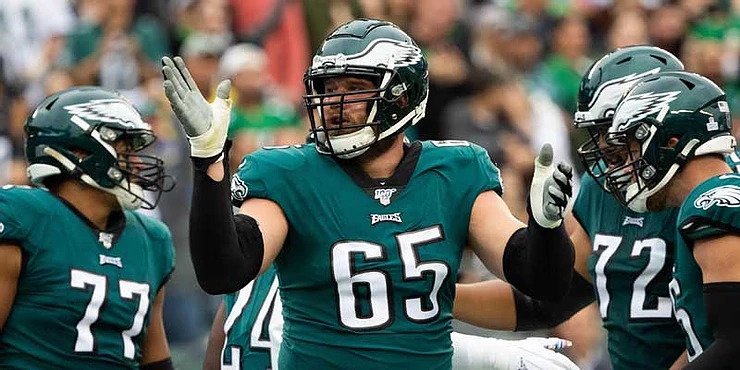Analysis
4/2/21
5 min min read
Tracking Changes in Positional Value in Today's NFL

Over time, there has been a subtle change in the value placed upon certain positions in football. I do not think there has been a massive shift, but there are instances in which today’s perception is somewhat different than what it was 10 or 15 years ago.
Let’s examine some of these instances:
Risers
The Top Right Tackles vs. the Top Left Tackles
This began as a subtle difference but it is one that could become more noteworthy. I still think left is more important, but I used to think it was a huge difference as opposed to only a little now. It used to be that teams always put their best pass rusher at right defensive end. That, combined with it being the quarterback’s blindside (which others emphasized but I thought it was more of a secondary importance), elevated the importance of the left tackle. Now, we have a lot of left defensive ends that are good or teams that switch guys back and forth depending on matchups. All that has narrowed the gap significantly. Even looking back, the number of teams that had two good defensive ends was fairly small. The teams that switched guys back and forth were virtually non-existent. We have seen a huge increase in this.
It is hard for most offensive linemen to switch from the left to the right. There was an assumption the same was true for pass rushers, never for any real solid reason. Some players were on the right simply because they were right-handed, and they were actually discovered to be better on the left. Teams also realized guys rushing against weaker tackles on either side can maximize effectiveness. Even looking at the playoff teams from last season, most teams have two guys that could rush or a guy that can move around on defense. Football has changed; it is now about mismatches, not necessarily just big-on-big. Coaches moved slowly on this.
The top left tackles are making $20-23 million annually, and Lane Johnson is still the highest-paid right tackle at $18 million, with the rest at or below $14 million. Why is there still a pay gap if the smart teams realize the importance of both a solid right tackle and left tackle?
I think it starts in college. Teams play their best tackle on the left side. The market has shrunk a little and I expect it could continue some. The blindside will always separate the markets, but I still think it is bigger than it should be. If I had to pick, I would want the star tackle on the left -- but that does not change how I would approach looking for a right tackle. When players like Jack Conklin and Taylor Moton (tag) cost $14 million annually, there is good value there.
The Value of Interior Offensive Linemen
Guards used to make considerably less than any tackle. Now, you have Washington bringing back Brandon Scherff on a second tag for over $18 million. Joe Thuney just signed with Kansas City for $16 million annually, a move that was enabled when Kansas City released two tackles to free up money.
With passing more prevalent and more teams moving around rushers, the value of the interior pocket has really gone up. You also have a lot of teams relying on young quarterbacks who may not be ready for the quickness of interior defensive linemen. Having a strong pocket is really a young quarterback’s best friend. It gives them half a second longer to scan the field and puts the team in a good position to be able to run and pass. Teams are starting to realize that if you can do a good job protecting the interior, it will allow your quarterback to step up and avoid any edge pressure.
This is usually something I emphasized while drafting. Most of the time if we were selecting a player with a vision to be guard, we wanted to make sure he had some tackle experience. I am a big believer in having a very good offensive line, with an emphasis on the interior, so I think this was true before the money started to catch up.
The Nickel/Slot Corner
There is still a gap with outside corners, because those guys can play 100% of the plays, but the slot guys that used to play 30-40% of snaps are now playing 60-65% of snaps. This has been reflected in pay and also with the number of teams that move outside corners into the middle.
Fallers
The Top-Paid Left Tackles Vs. the Top-Paid Pass Rushers
These positions used to be in a spot where they were virtually the same. Now you look at it and Joey Bosa is at $27 million annually, followed by Myles Garrett and Khalil Mack before you get to David Bakhtiari at $23 million for Green Bay. Trent Williams is a little bit different because his contract is really $20 million for four years, before San Francisco is able to get out of it relatively painlessly before Williams turns 37. That is a 17% difference in the top of the markets that did not exist before.
I do think the top edge rusher is a more important, because you have the Garretts and Bosas who can absolutely wreck games. Throughout my career, I always valued the edge rusher as the second-most important position behind quarterback, and then a top tackle behind that, so I think that market is close to what we are seeing now.
Running Back
This market has not really changed a lot over the years except for a couple teams jumping out and extending guys early. The issue with the running back position comes down to two things: One, running backs do not have long careers. They wear out quickly, so by the time you are getting to a second contract, you may not be getting what you paid for on the first contract. Second, it is the only position in the league where there is more supply than demand. Other positions can be harder to fill, but I think every team in the NFL has at least one good back. There is just a huge abundance at the position that no other position has.
Despite the common media narrative, no one is devaluing the position. Running backs are still just as important as they have been. Andy Reid throws the ball more than anyone in football, and he still thinks running backs are really important to a good offense -- but I would be shocked if he ever paid one north of $10-12 million. It is just not needed and that money can make a bigger difference elsewhere.
Wide Receiver
After Julio Jones at $22 million, the rest of the market started coming in at $18-19 million. It used to be that receiver was close to the top edge; now there is a significant gap. There is just such an influx at the position, and I think a lot of the top 20 wide receivers provide close to equal value, unless you are talking about just the top three or four.
Middle Linebacker
Kind of the inverse of the slot corner. Teams are so focused on creating mismatches and spreading defenses out that the middle linebacker is less valuable -- unless he has the necessary athletic skills.








